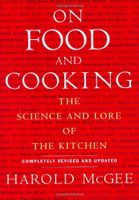Advertisement
Fingers and Burgers, Surimi
By Harold McGee
Published 2004
The most widely consumed form of processed fish is surimi, the Japanese term for “minced fish,” which is nearly 1,000 years old and is now made into many imitation shellfish products. Surimi is made by finely mincing fish scraps (today, usually pollack), washing them, pressing them to remove the wash water, salting and seasoning the mince, shaping it, and boiling it until it solidifies. Washing the mince removes nearly everything from the muscle except the muscle fiber membranes and contracting proteins. Salting then dissolves the protein myosin out of the muscle fibers, so that when it’s heated, the myosin will coagulate into a continuous, solid, elastic gel in which the other fiber materials are embedded. The result is a flavorless, colorless, homogeneous matrix that can be flavored, colored, and formed to imitate nearly any seafood.


